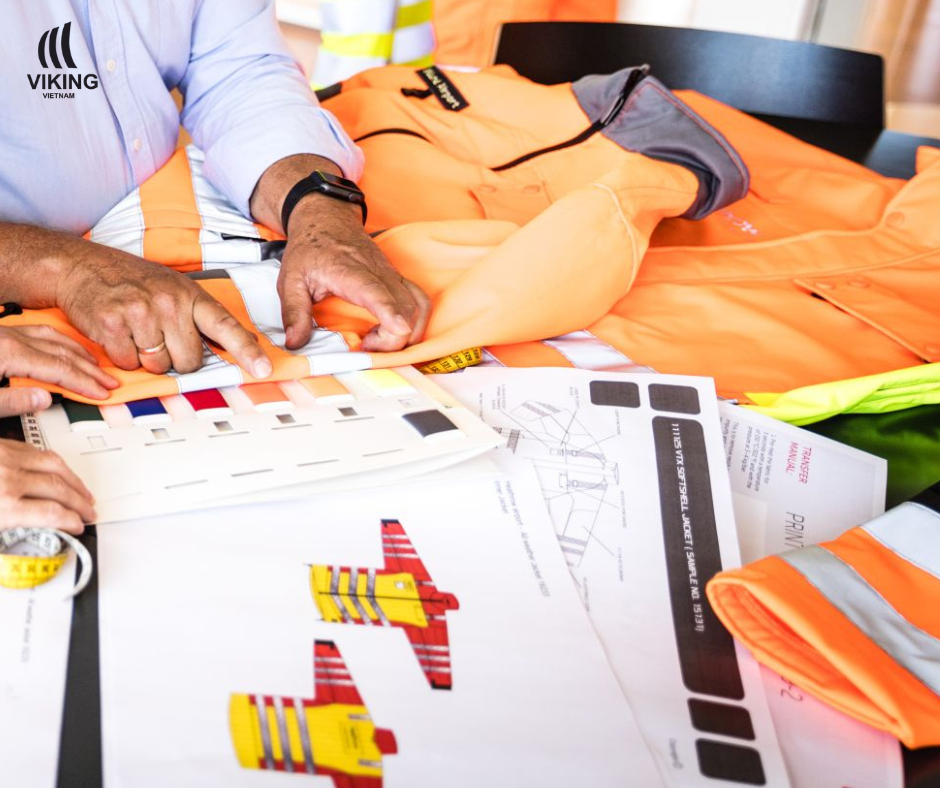In the context of climate change and increasing demands for sustainable development, the protective garment industry is under pressure to transition toward the use of eco-friendly materials.
C0 and C6 fabrics are two common materials used in protective clothing production, each with distinct characteristics and environmental impacts. Viking Vietnam, with a strong commitment to environmental protection and the implementation of Viking's ESG policy, has selected and adopted alternative materials as part of its vision toward sustainable development.

C6 Fabric: High Performance but Environmental Risks
C6 fabric is treated with a fluorocarbon compound with a six-carbon chain, offering superior water, oil, and dirt repellency. This makes C6 a popular choice for manufacturing protective garments, especially in harsh working conditions.
However, despite its high performance, C6 contains PFAS (Per- and Polyfluoroalkyl Substances) such as PFOA and PFOS. These substances are known for their persistence in the environment, their ability to accumulate in living organisms, and their harmful effects on human health and ecosystems. Numerous studies have linked PFAS to serious health issues, including cancer and endocrine disruption.
Due to health and environmental concerns, many countries and international organizations have introduced regulations to restrict or ban PFAS in textile products. This has prompted the industry to seek eco-friendly alternatives, such as C0 fabrics.
C0 Fabric: A Sustainable Choice for the Future
C0 fabric is a fluorocarbon-free material that uses environmentally friendly substitutes to achieve basic water repellency. While it may not offer the same level of protection as C6, C0 still meets requirements in many applications, especially when combined with advanced finishing technologies.
By being free of PFAS, C0 fabric does not pose the bioaccumulation and environmental contamination risks associated with C6. This makes it a preferred choice in Viking's environmental protection efforts and in alignment with Viking’s ESG strategy.
Some challenges when using C0 include lower water repellency and higher production costs compared to C6. However, with advancements in technology and support from policies that promote eco-friendly materials, these challenges are gradually being overcome.

Viking Vietnam: Implementing Eco-Friendly Materials
Viking Vietnam has been rigorously implementing its ESG policies, focusing on incorporating eco-friendly materials throughout the supply chain. This includes expanding the use of C0 fabric in production.
Key initiatives include:
Optimizing Production Processes: Applying water- and energy-saving technologies in fabric dyeing and finishing stages.
Waste Management: Implementing waste sorting and treatment procedures aligned with ISO 14001 standards.
Employee Training: Organizing training programs on Viking’s ESG policy and the importance of using eco-friendly materials.
Which Option Is More Sustainable?
Comparing C0 and C6 fabrics reveals that although C6 offers superior water repellency, its health and environmental risks make it a less sustainable choice. On the other hand, C0 fabric, with its environmental advantages, emerges as the preferred material for sustainability-driven businesses.
Viking Vietnam, through its adoption of eco-friendly garment materials, has proven that innovation and social responsibility can go hand in hand in the protective garment industry. Choosing C0 is not only a smart business decision but also a commitment to a sustainable future—for the company and for the planet.